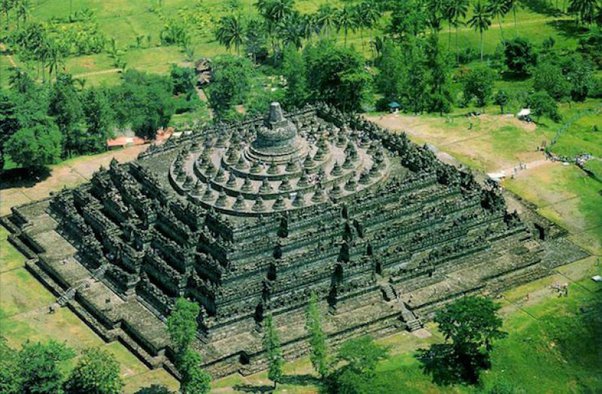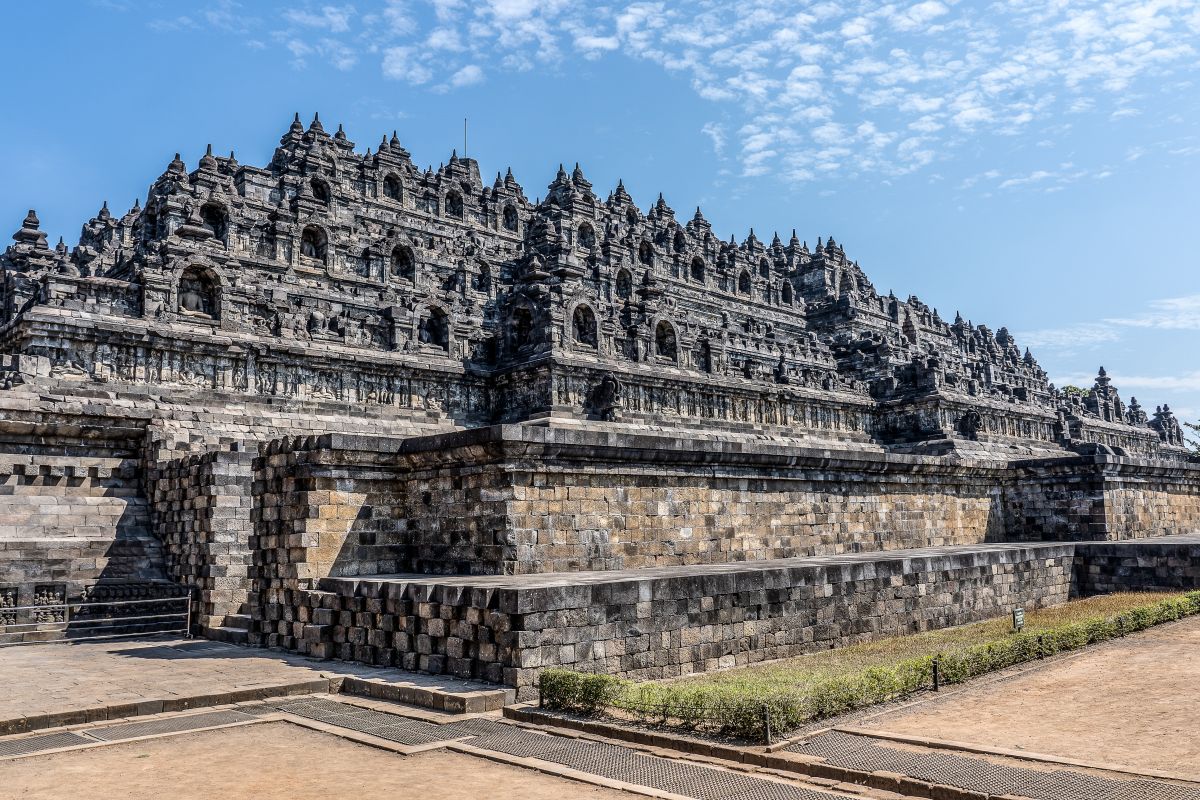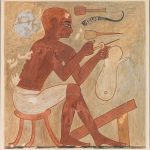The largest Buddhist temple in the world is located in Central Java, Indonesia, and dates back to the Shailendra Dynasty in the eighth and ninth centuries.

Borobudur Temple, located in Central Java, Indonesia, stands as a monumental testament to the grandeur and spiritual devotion of the Shailendra dynasty. Constructed between the 8th and 9th centuries CE, this architectural marvel is recognized as the largest Buddhist temple in the world. Its significance transcends mere size; it embodies the zenith of Buddhist art and architecture, reflecting profound religious, cultural, and historical importance.
The Shailendra dynasty, which ruled over the region during this period, was known for its patronage of Mahayana Buddhism. This dynasty invested immense resources and effort into the construction of Borobudur, transforming a natural hill into a massive, intricately designed stupa. The temple’s design is a mandala, a geometric representation of the universe in Buddhist cosmology, intended to guide practitioners along the path to enlightenment.

Borobudur’s structure comprises nine stacked platforms, six square and three circular, topped by a central dome. The ascent through the levels of the temple symbolizes the journey from the earthly realm to the nirvana, the ultimate goal in Buddhism. Each level is adorned with extensive bas-relief carvings and statues of the Buddha, narrating tales from the Buddha’s life and illustrating various teachings. These carvings, covering a total surface area of 2,500 square meters, are among the most exquisite examples of Buddhist reliefs in the world.
The central dome, surrounded by 72 Buddha statues seated inside perforated stupas, represents the attainment of enlightenment. The architectural and symbolic significance of Borobudur is enhanced by its alignment with the surrounding landscape, including the nearby volcanoes, which are considered sacred in Javanese tradition. This harmonious integration of natural and man-made elements underscores the temple’s role as a spiritual nexus.

Borobudur’s construction utilized approximately two million volcanic stone blocks. The temple’s builders employed a sophisticated interlocking technique to ensure the stability and durability of the structure. Despite being abandoned and hidden under layers of volcanic ash and jungle growth for centuries, Borobudur was rediscovered in the 19th century and has since been restored to its former glory. Its restoration was a collaborative effort involving local and international experts, reflecting the global recognition of Borobudur’s significance.
Today, Borobudur is not only a UNESCO World Heritage Site but also a living center of Buddhist worship and pilgrimage. Annually, it attracts millions of visitors from around the world who come to marvel at its architectural splendor, participate in religious ceremonies, or simply experience the serene and meditative ambiance that the temple exudes.

Borobudur’s influence extends beyond its physical boundaries. It has inspired numerous studies and scholarly works in the fields of archaeology, history, and religious studies. The temple serves as a crucial link in understanding the spread and development of Buddhism in Southeast Asia, as well as the region’s historical interactions with other cultures and civilizations.
In conclusion, Borobudur Temple in Central Java, Indonesia, is a magnificent edifice that embodies the zenith of the Shailendra dynasty’s architectural and spiritual achievements. Built between the 8th and 9th centuries CE, it stands as the largest Buddhist temple in the world, a beacon of enlightenment and a symbol of Indonesia’s rich cultural heritage. Through its majestic structure and profound symbolism, Borobudur continues to inspire awe and reverence, connecting the past with the present and fostering a deeper appreciation of humanity’s shared spiritual legacy.










